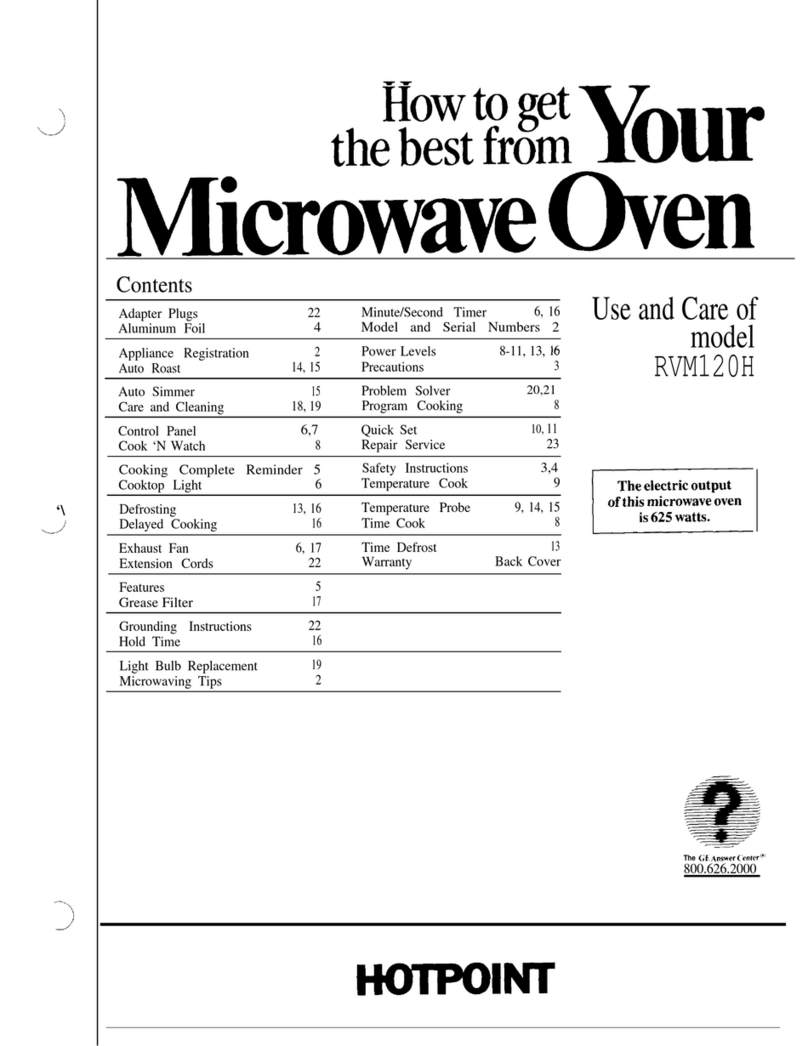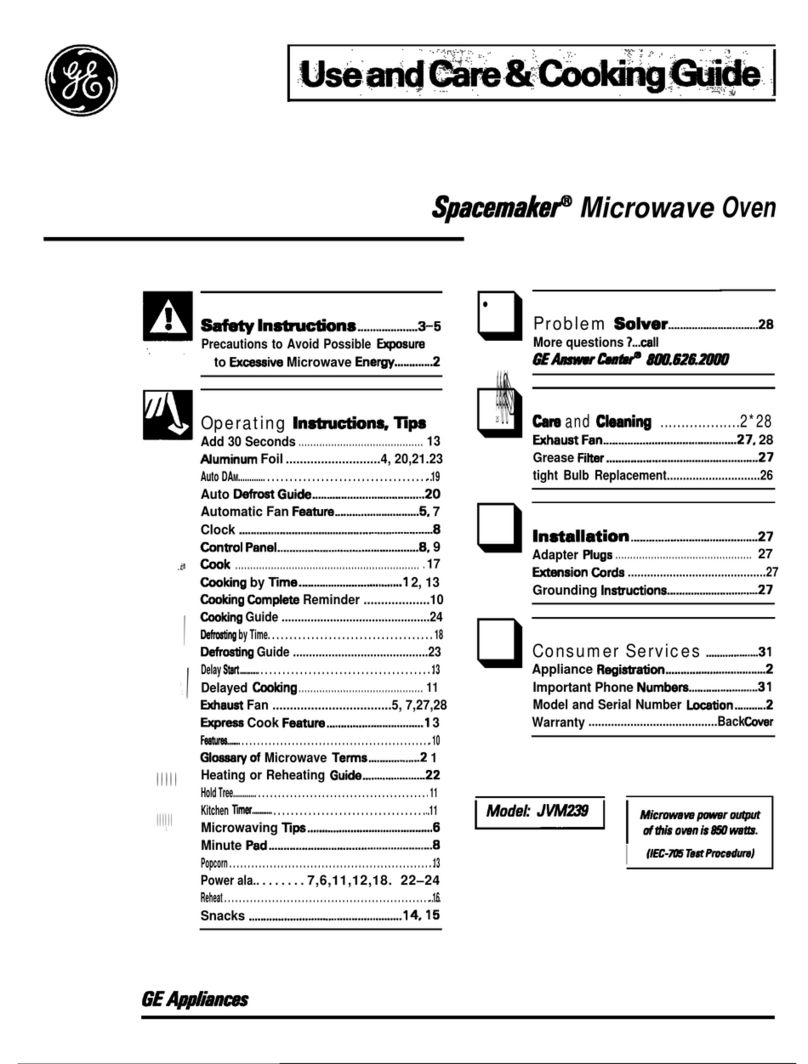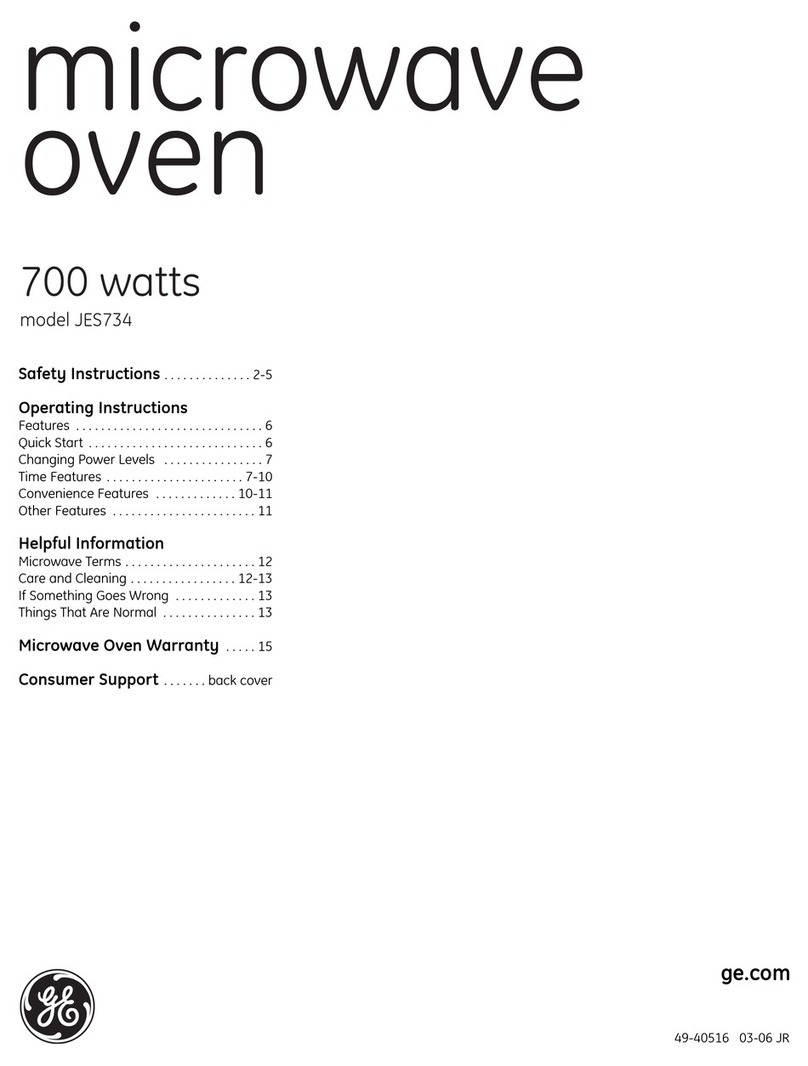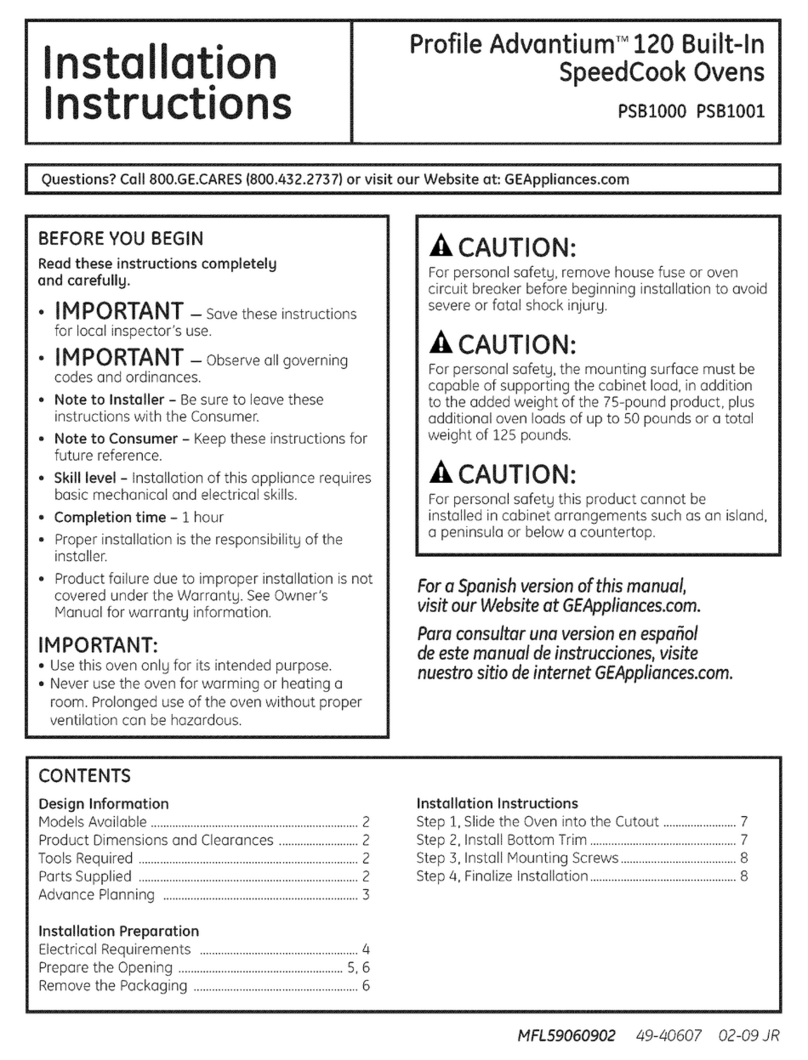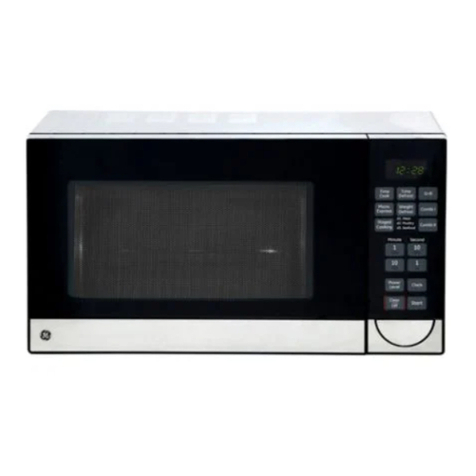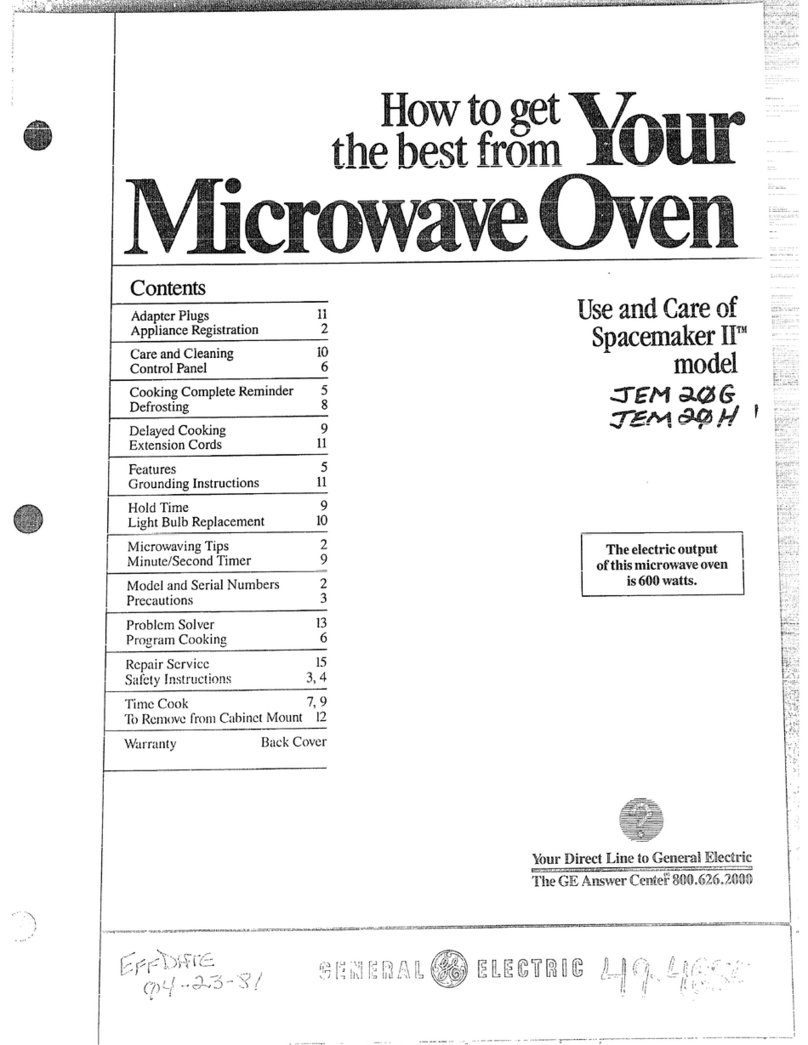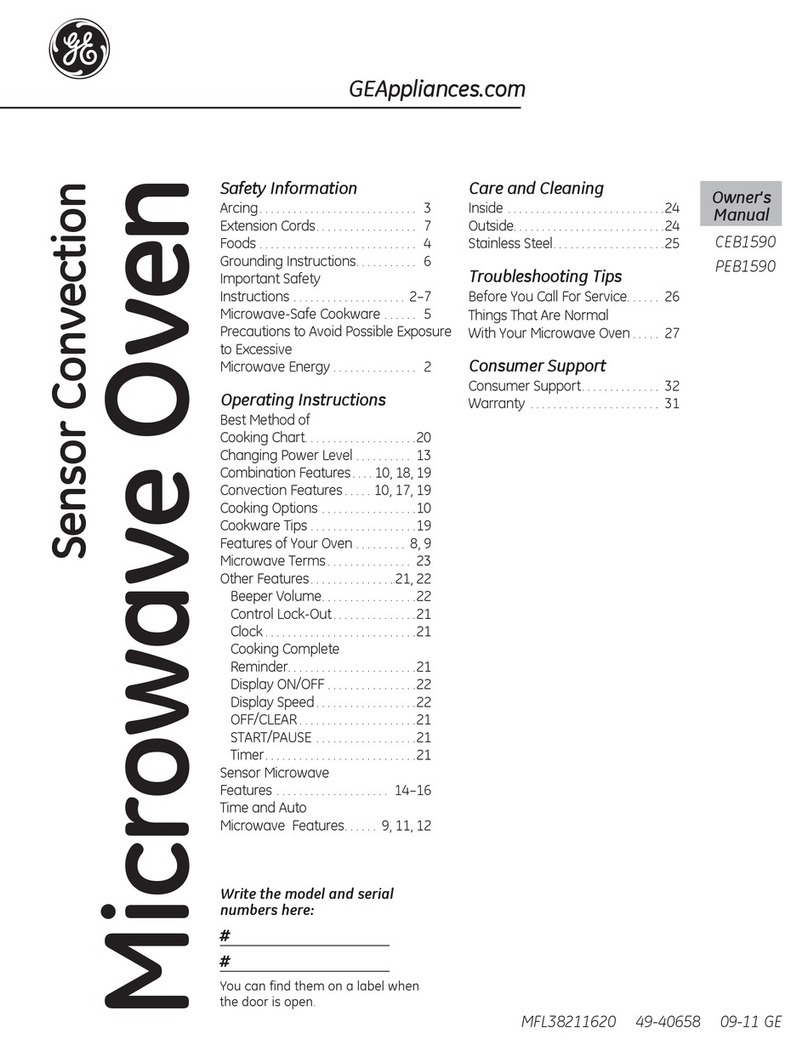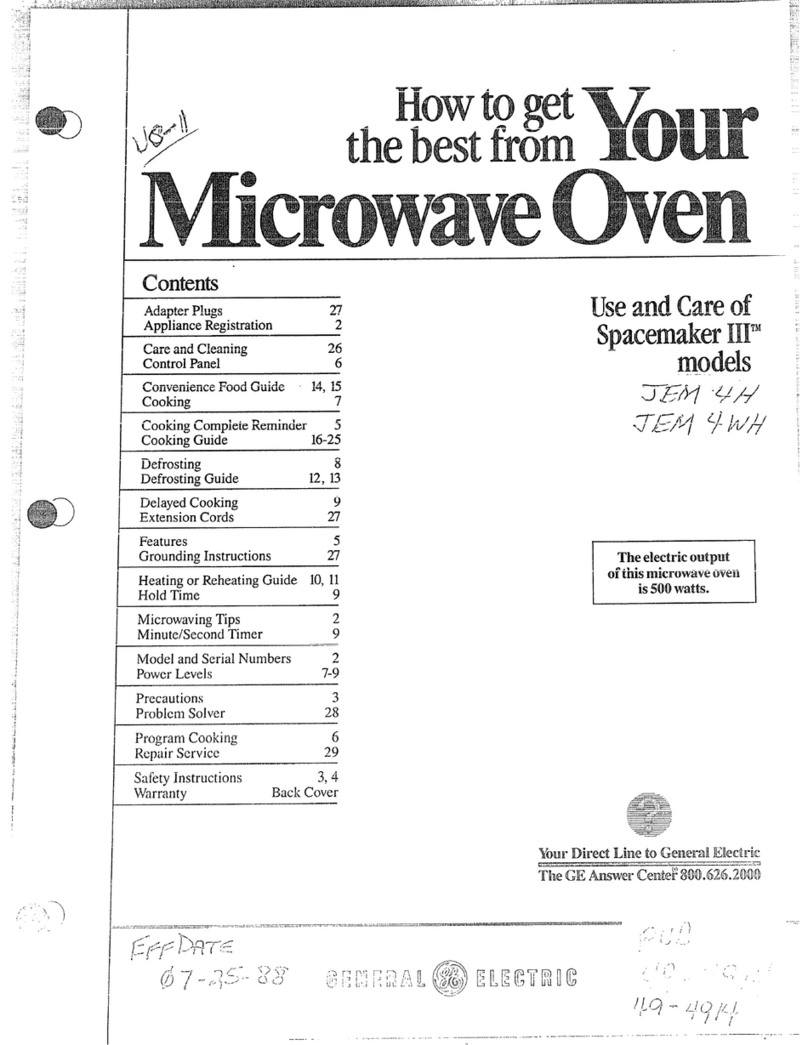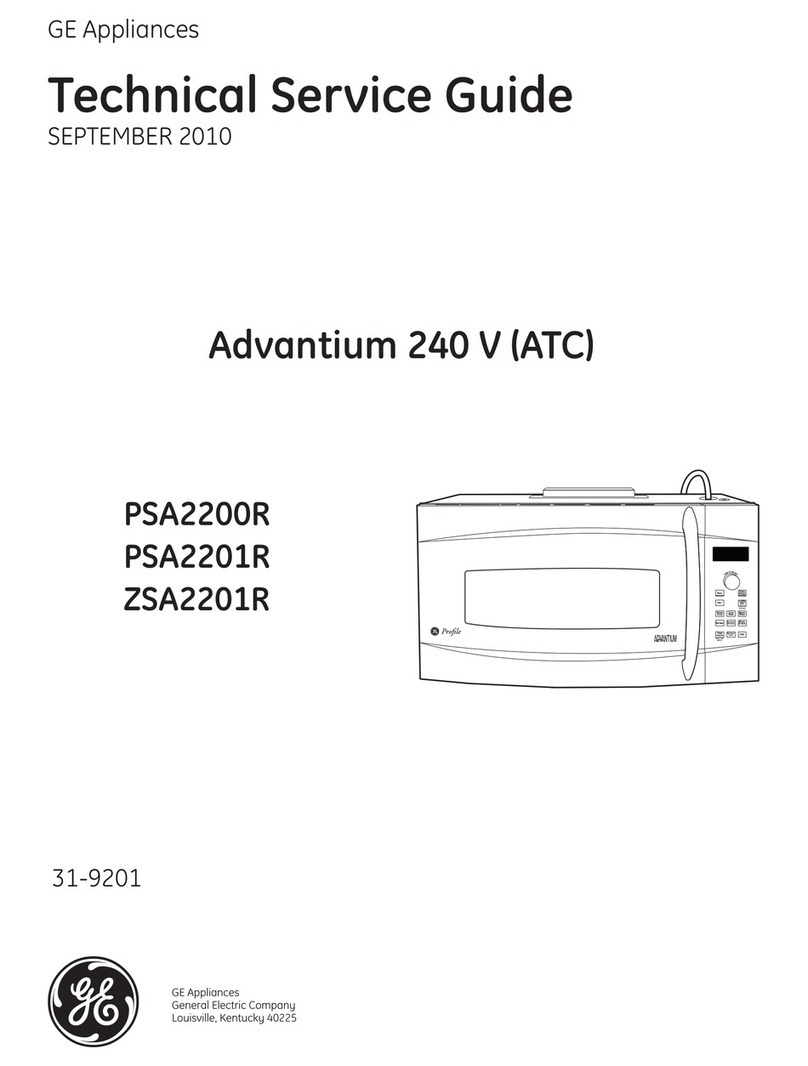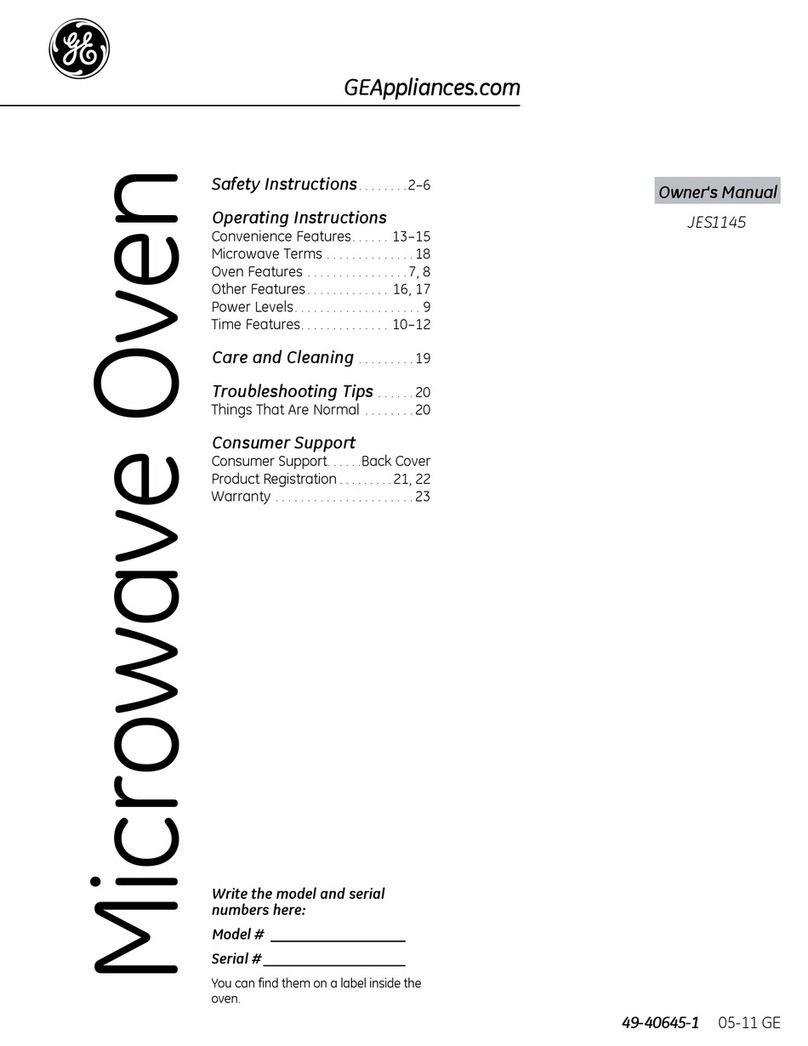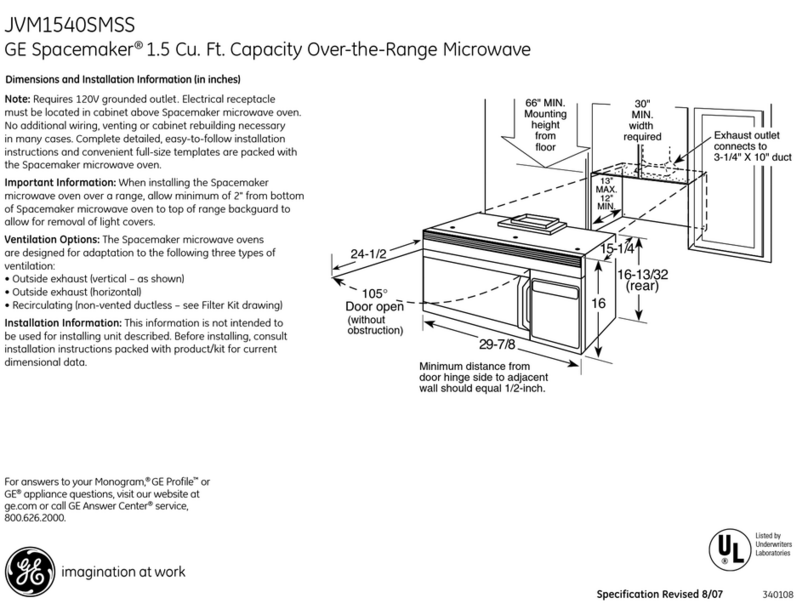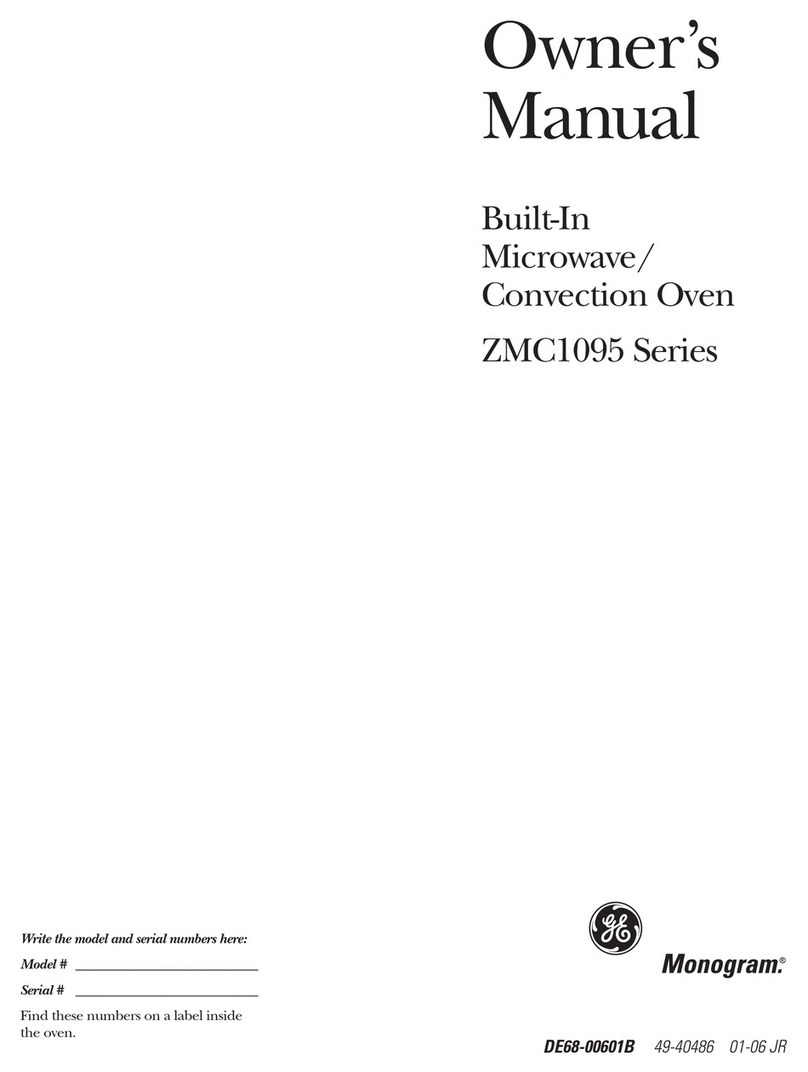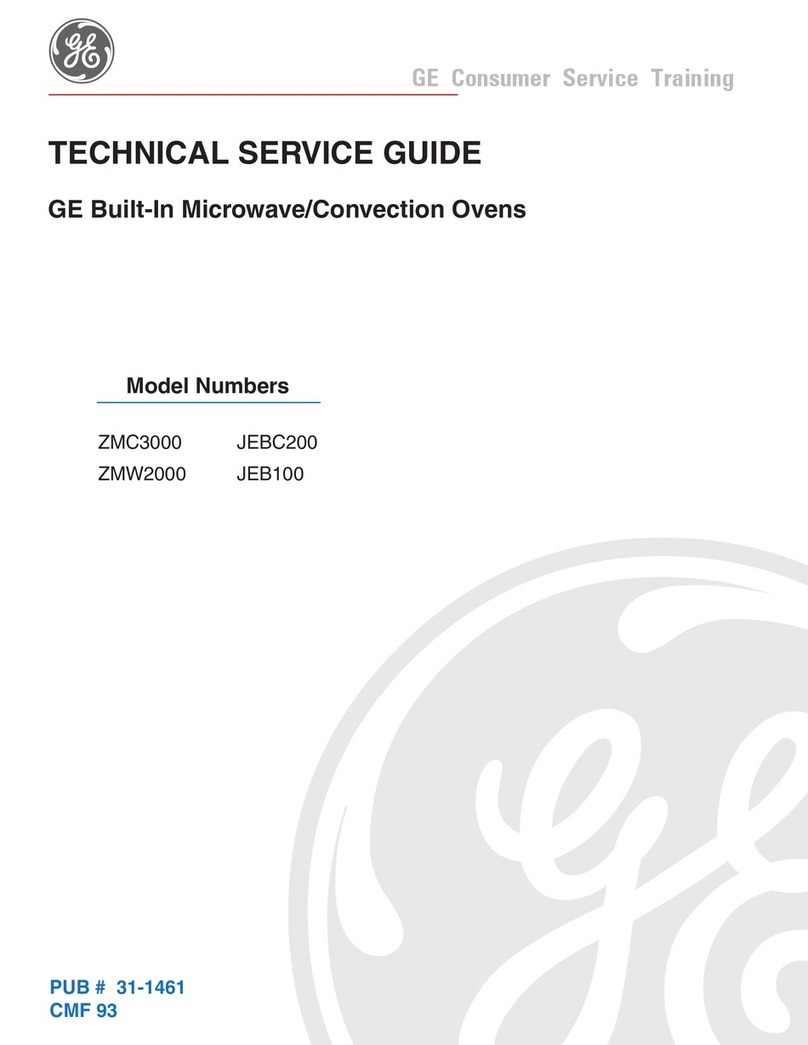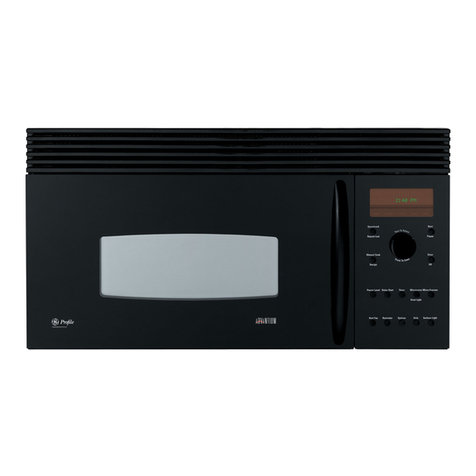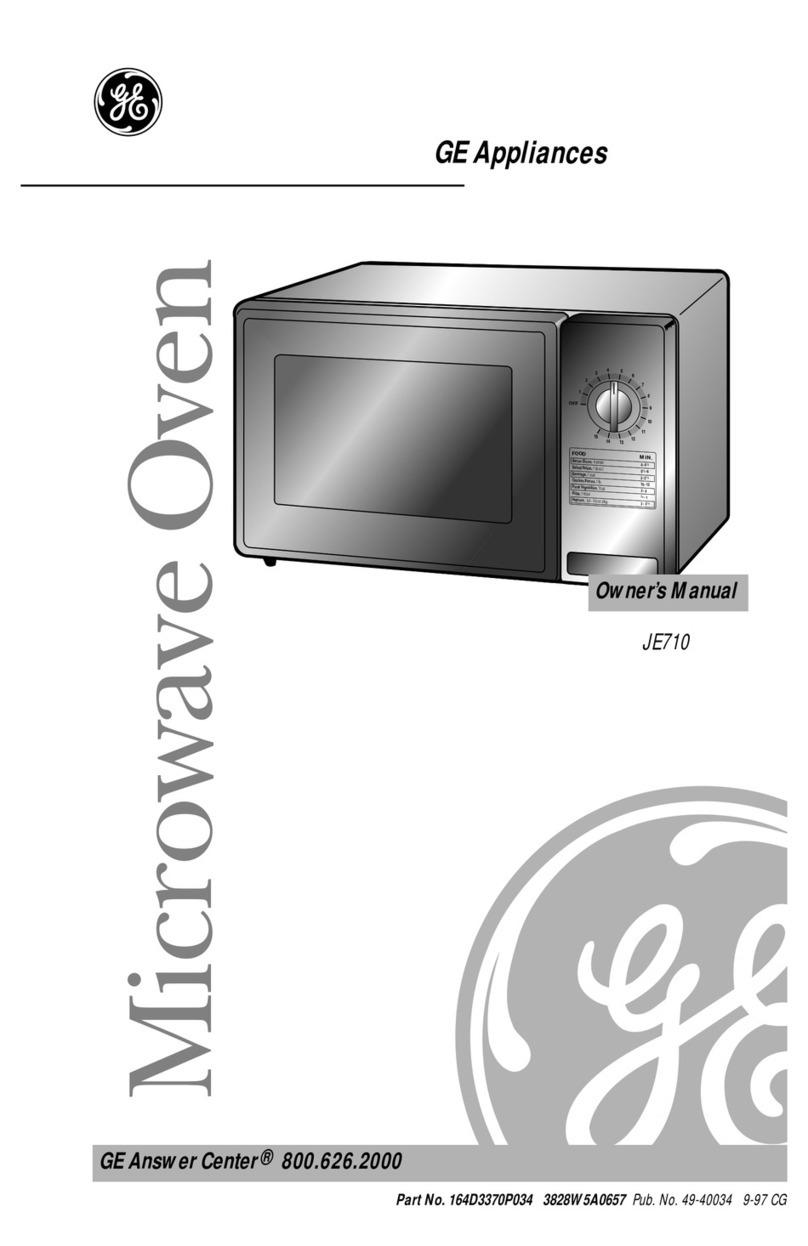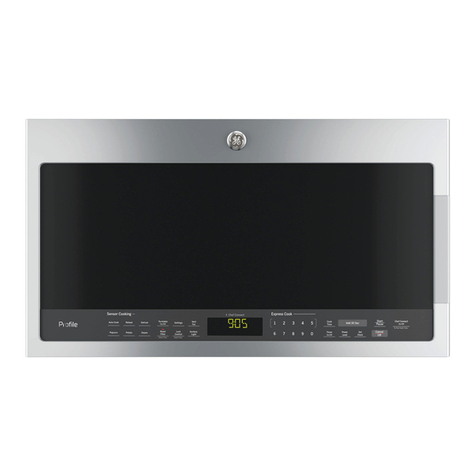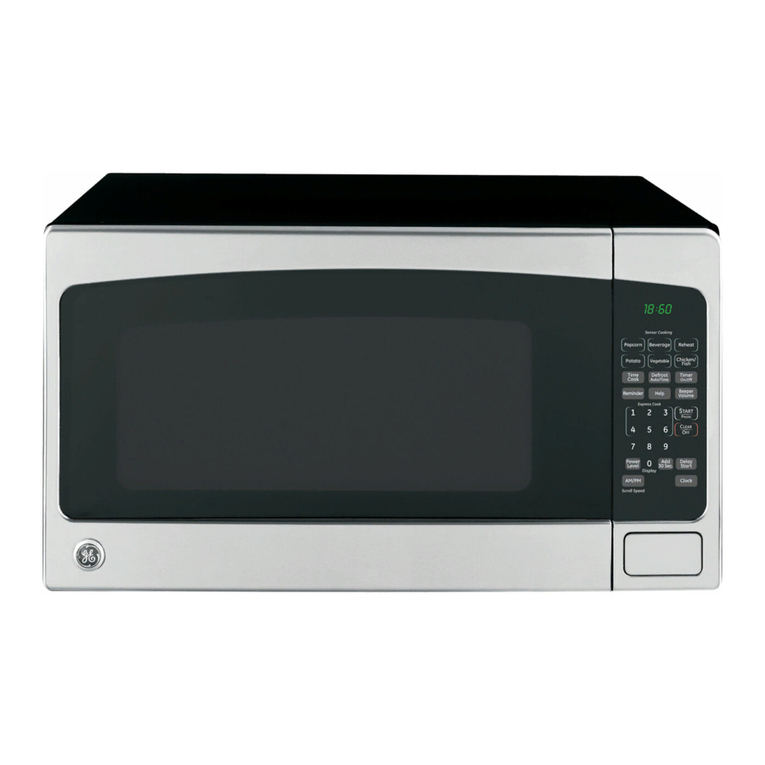
Read~h!$ Use’ and ~a@fkmk
Takethe time to read this book and learn how to
enjoYyour now Microwave CookingCenter.It con-
tains detailed operating jnstructjons and recom-
mendedmaintenance, aswell ashandytips to help
you gain maxjmum benefits from your Microwave
Cookhg Center.Onceyou havereadthe book, keep
it handyto answer any questions you may have.
if you hav”eany additional- questions concerning
the operation of your Microwave Cookhg Center,
write—includin your phonenumber—to:
1!onsumerAffairs ~
GeneralElectric Company
ApphaneePark
Louisville, Kentucky 40225
IF YOURECEIVEDADAMAGEDCOOKINGCENTER,
immediately contact the dealer (or builder) from
whom you purchased it. They have beeninformed
of the proper procedure to take care of such mat-
ters andcan handleit for you.
RegisterYourCookingC%naer
it is important that we,the manufacturer, know the
location of your Microwave Cooking Centershould
aneedoccur for adjustments.
Pleasecheck with your supplier to besure hehas
registered you asthe owner; also sendin your Pur-
chase RecordCard. If you move, or if your are not
the original purchaser please write to us, stating
model and serial numbers. Thisapyllancemustbe
registered.Pleasebecertainthatit is.
Write to:
GeneralElectric Company
RangeProduct Service
AP2-21O
Appliance Park
Louisville, Kentucky 40225
RecordModelandSerialNumbers
YourRangehas anameplate on which is stamped
themodelandserial numbers.Tolocate nameplate,
openovendoor and look at top of oven opening.
Modelandserial numbers arealso onthe Purchase
Record Card which came with your Microwave
Cooking Center.Recordthe numbers in the spaces
provjded below.
Pleaserefer to both model and serial numbers in
anyfuture correspondence or product service calls
concerning your Microwave CookingCenter.
ModeliNumber
SerialNumber
DatePurchased
KEEPPURCHASERECEIPTWITHTHISf100KTOESTAB-
LISHTHEWARRANTYPERIOD. 1
,.
B63fore‘YouCkilforServkxx
Check“Common Problems” section, (Seepage30.)
{t lists many minor causes of operathg problems
that you cancorrect yourself andmay save you an
unnecessary service calL
H‘Ycbul+!eecl Serv!ce
In many cities, there’s aGeneral Electric Factory
ServiceCenter. Call and a radio-dispatched truck
will cometo your homeby appointment—morning
or afternoon. Chargethe work, if you like. All the
centers accept both Master ChargeandWsacards.
Orlook for theGeneralElectric franchised Customer
Care@servicers. You’ll find them in the Yellow
Pagesunder“GENERALELECTRICCUSTOMERCARE@
SERVICE.” or “GENERAL ELECTRIC–HOTPOINT
CUSTOMERCARE@SERVICE.”
lfyoune~dservicoliterature,patislists,partsor -
series,contact oneofthe Factory Servjce Cent ,a
franchised CustomerCare@servicer oryour General
Electric dealer.
Ext6ndedServiceContracts:Theterms of your war-
ranty provide free service covering fajlures dueto
manufacturing defectsfor adefinite period oftime.
After this warranty expires you may purchase an
ExtendedService Contract which will enableyou to
budget you.rservice needs.This coverage beyond
warranty IS available from our Factory Service
Centersandfrom manyfranchised CustomerCare@
servicers. It is a good idea to apply for this cov-
eragebeforeyour warranty expires.
Stepsto FollowforFWtherHelp
First,contact the people who serviced your micro-
wave oven, Explain why you are dissatisfied. In
most cases,this will solve the problem.
Next,if youarestill dissatisfied, write all thedetails–
including your phonenumber—to:
Manager,ConsumerRelations
GeneralElectric Company
WCE-312
Appliance Park
Louisville, Kentucky 40225
I%ally, if your problem is still not resolved, write:
MajorAp IianceConsumerAction Panel
!V20North acker Drive
Chicago,Illinois 60606
This paneliknown asiMACAP, isagroupofl ‘
pendent consumer experts under the sponsor
of several industry associations. Its purpose is o
study practices andadvise the industry of ways to
improve customer service. BecauseMACAPis free
of industry control andinfluence, it is ableto make
f
im artial recommendations andconsider eachcase
in ividually. .
m
.
